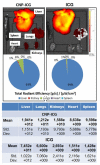Biological Safety and Biodistribution of Chitosan Nanoparticles
- PMID: 32340313
- PMCID: PMC7221586
- DOI: 10.3390/nano10040810
Biological Safety and Biodistribution of Chitosan Nanoparticles
Abstract
: The effect of unmodified chitosan nanoparticles with a size of ~100 nm and a weakly positive charge on blood coagulation, metabolic activity of cultured cardiomyocytes, general toxicity, biodistribution, and reactive changes in rat organs in response to their single intravenous administration at doses of 1, 2, and 4 mg/kg was studied. Chitosan nanoparticles (CNPs) have a small cytotoxic effect and have a weak antiplatelet and anticoagulant effect. Intravenous administration of CNPs does not cause significant hemodynamic changes, and 30 min after the CNPs administration, they mainly accumulate in the liver and lungs, without causing hemolysis and leukocytosis. The toxicity of chitosan nanoparticles was manifested in a dose-dependent short-term delay in weight gain with subsequent recovery, while in the 2-week observation period no signs of pain and distress were observed in rats. Granulomas found in the lungs and liver indicate slow biodegradation of chitosan nanoparticles. In general, the obtained results indicate a good tolerance of intravenous administration of an unmodified chitosan suspension in the studied dose range.
Keywords: biodistribution; blood compatibility; chitosan; in vivo treatment; polymer nanoparticles; safety evaluation.
Conflict of interest statement
The authors declare no conflict of interest.
Figures















References
-
- Kato Y., Onishi H., Machida Y. Contribution of chitosan and its derivatives to cancer chemotherapy. In Vivo. 2005;19:301–310. - PubMed
Grants and funding
LinkOut - more resources
Full Text Sources

